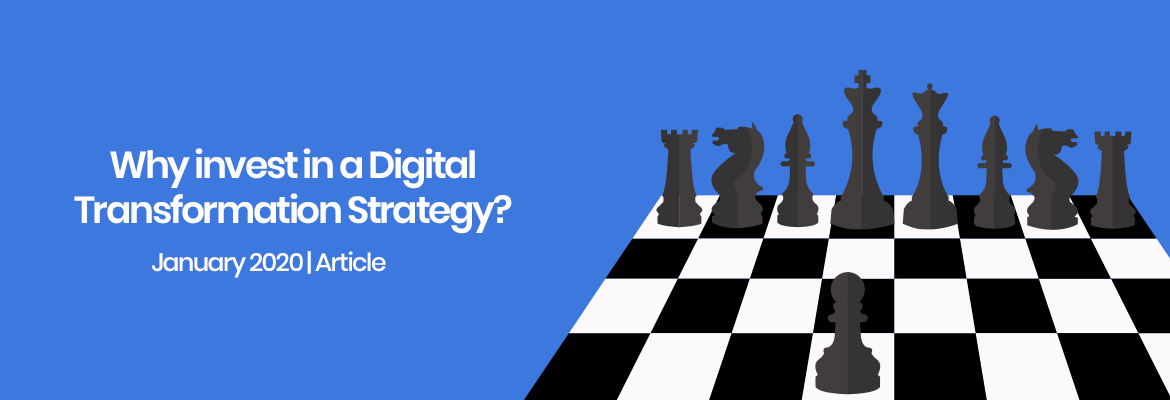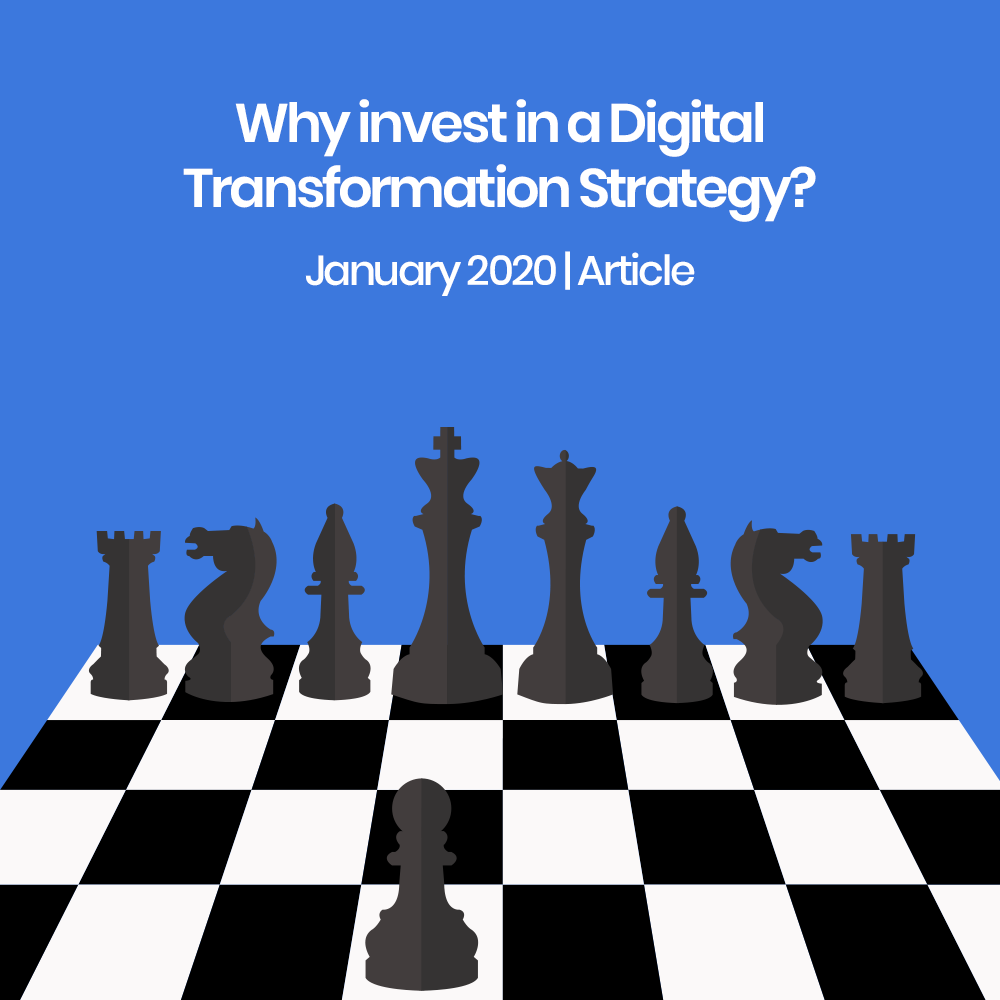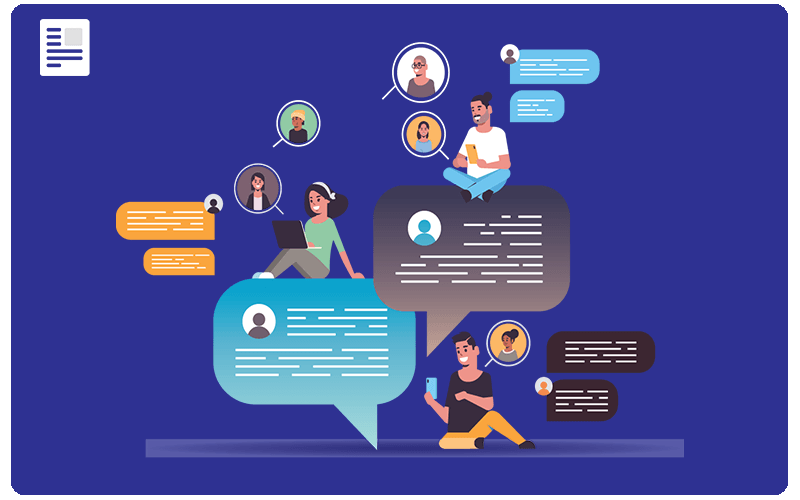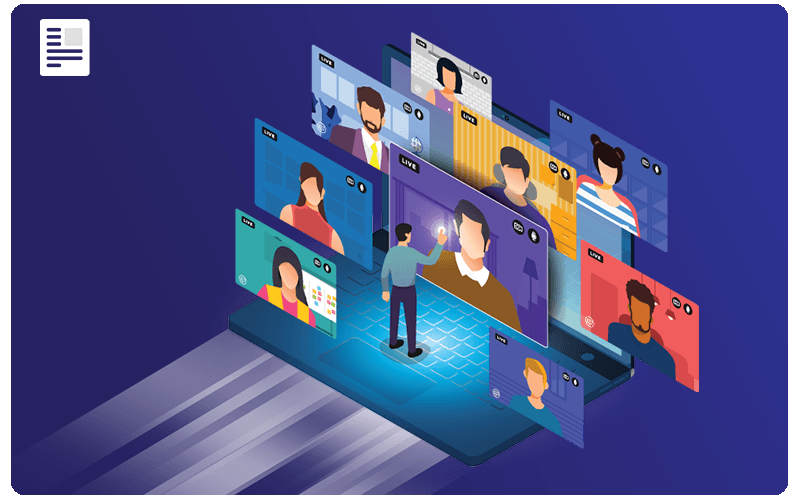

Successful digital transformations are a result of a singular, shared vision running through an entire organization. A vision that focuses on a blend of strategic, humanistic, cultural, procedural and technological aspects of things, which, in essence, is a fundamental shift in mindset. This mindset mandates doing things in ways most executives (and workforces) not only have not done before but require going back to the drawing board and re-imagining bulk of what they do and how they do it. And while a lot makes up this path of digital success, the following are some of the key ingredients that can help along the way.
Strategy, not technology will win this for you
Too many times, a digital transformation strategy is sold under the guise of a cool tool purchased by the not so tech-savvy executives who end up pulling the buying trigger without a comprehensive understanding of what they are getting into. What they get in the end is far from what they needed for things to work and as a result, these technology and innovation initiatives turn out to be nothing more than expensive business experiments. McKinsey’s Barr Seitz calls digital transformation a Trojan Horse where, for larger business transformations to occur, technology does play a vital role, but it surely is not the de facto end all be all.
Customer needs to be at the heart of it all
Customers are becoming the true drivers of this transformation (as they should be). The 2019 Salesforce State of the Connected Customer Research shows that upon dissatisfaction with a brand, 76% of new-age consumers (millennials and such) are ready to take their business elsewhere. That’s powerful considering most businesses (especially SMB’s) do not have customer centricity embedded into the philosophy of their business and end up losing their valuable customers. The forward-thinking ones understand the criticality of the use of technology and data to deeply understand their customer, better address issues, roll out custom-built solutions to deepen relationships and work hard to minimize gaps between expectations of the customer and the capabilities of the organization to cater to them. Forrester’s recent survey reveals that 37% of Fortune 500 organizations claim to understand their consumers, while only 10% could make real-time strategic moves based on their customer’s actions (Next Best Offer etc). What’s clear is that most organizations across the globe are operating in their own silos without having a clue about the customer. And while 70% of them worldwide claim to have some semblance of a digital strategy/journey/acumen, digital efforts of 84% of these do not see the light of the day, which will keep them on this path unless they wake up to the customer-centric realities of the digital world. So get to know your customer. It’s the only way forward.
Cultivate a culture of innovation and digital-ness
The ultimate power of a digital strategy lies in its scope and objectives with a sprinkle of organizational culture. Without this sprinkle, a high level of engagement of your current employees, attracting new ones to the organization and the right attitude to make customers successful just does not happen. Culture is typically hard to get right (as it’s a measure of so many variables; many of them beyond anyone’s control). While the right strategy in the mix and the right guidance from the top echelons can codify existing rituals and best practices of the formulation of the right culture, its organic growth is a result of the right attitude (and gratitude) towards employees and while elements of other cultures can be embedded in one’s own, a carbon copy of another doesn’t work at all. Add to this a digital mix where proximity at times does not happen and employees are scattered all over the place (and working remotely), it is even more important (and difficult) to understand the nuances of this new age cultural dynamic and win. The approach of transformation in such situations just cannot depend on the deployment of the right tools. It is also the willingness of using the tools to carry out the traditions in a combination of a digital and a physical model for this culture to cultivate and succeed. Tech organizations like Salesforce, Microsoft and some others are prime examples of a culture of growth of innovation with a mix of equality built into the fabric. A winning combination that is purely set up for long term success.
Prepare the people, ready the machinery; launch!!

The preparation of any defense starts long before its time to hit the battlefield. Selecting a competent force, putting them through warlike simulations and hundreds of hours of stringent training routines before deployment are few of the many steps that are carried out. Without these painstaking measures, the troops and the weapons are not declared fit for combat. In the business world, however, things are not carried out in such an organized manner. Transformations should follow a deep study of the existing core business domains (strategy, people, culture and customer) and essential business and process-driven groundwork should be laid out to weed out gaps, inefficiencies, and irregularities for a smooth run. Only once this groundwork has been set should the technology weaponries (hardware, software, tools, and data) should be handed over for attaining the maximum advantage and turning the odds in favor. Then, heavy reliance on these tools should become the norm and regular updates and enhances should be continued to be made to support success.
Build the strategy; The TransformX way
As is the TransformX way, for such initiatives, we recommend that our clients bring an open state of mind to defining digital. ‘Digital’ is far more than technology, a process or a mission statement; it is a way of doing things, a state of mind, a belief system. Elements of our two signature offerings Organizational Transformation and Employee Enablement are combined to run Digital Maturity Assessments and Digital Acumen Assessments that provide a baseline of where things stand on the organization and the employee side and identifies key areas that need to be addressed from a strategy, process, technology or a skill-building level across the board. These insights are then used to create bespoke Digital Transformation Roadmaps and Digital Learning Journeys to set our clients on a journey of growth, profitability and the exploration of new digital/ data-enabled business models and revenue streams. We look forward to partnering with you on your next culturally infused digital transformation initiative.
Successful digital transformations are a result of a singular, shared vision running through an entire organization. A vision that focuses on a blend of strategic, humanistic, cultural, procedural and technological aspects of things, which, in essence, is a fundamental shift in mindset. This mindset mandates doing things in ways most executives (and workforces) not only have not done before but require going back to the drawing board and re-imagining bulk of what they do and how they do it. And while a lot makes up this path of digital success, the following are some of the key ingredients that can help along the way.
Strategy, not technology will win this for you
Too many times, a digital transformation strategy is sold under the guise of a cool tool purchased by the not so tech-savvy executives who end up pulling the buying trigger without a comprehensive understanding of what they are getting into. What they get in the end is far from what they needed for things to work and as a result, these technology and innovation initiatives turn out to be nothing more than expensive business experiments. McKinsey’s Barr Seitz calls digital transformation a Trojan Horse where, for larger business transformations to occur, technology does play a vital role, but it surely is not the de facto end all be all.
Customer needs to be at the heart of it all
Customers are becoming the true drivers of this transformation (as they should be). The 2019 Salesforce State of the Connected Customer Research shows that upon dissatisfaction with a brand, 76% of new-age consumers (millennials and such) are ready to take their business elsewhere. That’s powerful considering most businesses (especially SMB’s) do not have customer centricity embedded into the philosophy of their business and end up losing their valuable customers. The forward-thinking ones understand the criticality of the use of technology and data to deeply understand their customer, better address issues, roll out custom-built solutions to deepen relationships and work hard to minimize gaps between expectations of the customer and the capabilities of the organization to cater to them. Forrester’s recent survey reveals that 37% of Fortune 500 organizations claim to understand their consumers, while only 10% could make real-time strategic moves based on their customer’s actions (Next Best Offer etc). What’s clear is that most organizations across the globe are operating in their own silos without having a clue about the customer. And while 70% of them worldwide claim to have some semblance of a digital strategy/journey/acumen, digital efforts of 84% of these do not see the light of the day, which will keep them on this path unless they wake up to the customer-centric realities of the digital world. So get to know your customer. It’s the only way forward.
Cultivate a culture of innovation and digital-ness
The ultimate power of a digital strategy lies in its scope and objectives with a sprinkle of organizational culture. Without this sprinkle, a high level of engagement of your current employees, attracting new ones to the organization and the right attitude to make customers successful just does not happen. Culture is typically hard to get right (as it’s a measure of so many variables; many of them beyond anyone’s control). While the right strategy in the mix and the right guidance from the top echelons can codify existing rituals and best practices of the formulation of the right culture, its organic growth is a result of the right attitude (and gratitude) towards employees and while elements of other cultures can be embedded in one’s own, a carbon copy of another doesn’t work at all. Add to this a digital mix where proximity at times does not happen and employees are scattered all over the place (and working remotely), it is even more important (and difficult) to understand the nuances of this new age cultural dynamic and win. The approach of transformation in such situations just cannot depend on the deployment of the right tools. It is also the willingness of using the tools to carry out the traditions in a combination of a digital and a physical model for this culture to cultivate and succeed. Tech organizations like Salesforce, Microsoft and some others are prime examples of a culture of growth of innovation with a mix of equality built into the fabric. A winning combination that is purely set up for long term success.
Prepare the people, ready the machinery; launch!!

The preparation of any defense starts long before its time to hit the battlefield. Selecting a competent force, putting them through warlike simulations and hundreds of hours of stringent training routines before deployment are few of the many steps that are carried out. Without these painstaking measures, the troops and the weapons are not declared fit for combat. In the business world, however, things are not carried out in such an organized manner. Transformations should follow a deep study of the existing core business domains (strategy, people, culture and customer) and essential business and process-driven groundwork should be laid out to weed out gaps, inefficiencies, and irregularities for a smooth run. Only once this groundwork has been set should the technology weaponries (hardware, software, tools, and data) should be handed over for attaining the maximum advantage and turning the odds in favor. Then, heavy reliance on these tools should become the norm and regular updates and enhances should be continued to be made to support success.
Build the strategy; The TransformX way
As is the TransformX way, for such initiatives, we recommend that our clients bring an open state of mind to defining digital. ‘Digital’ is far more than technology, a process or a mission statement; it is a way of doing things, a state of mind, a belief system. Elements of our two signature offerings Organizational Transformation and Employee Enablement are combined to run Digital Maturity Assessments and Digital Acumen Assessments that provide a baseline of where things stand on the organization and the employee side and identifies key areas that need to be addressed from a strategy, process, technology or a skill-building level across the board. These insights are then used to create bespoke Digital Transformation Roadmaps and Digital Learning Journeys to set our clients on a journey of growth, profitability and the exploration of new digital/ data-enabled business models and revenue streams. We look forward to partnering with you on your next culturally infused digital transformation initiative.




